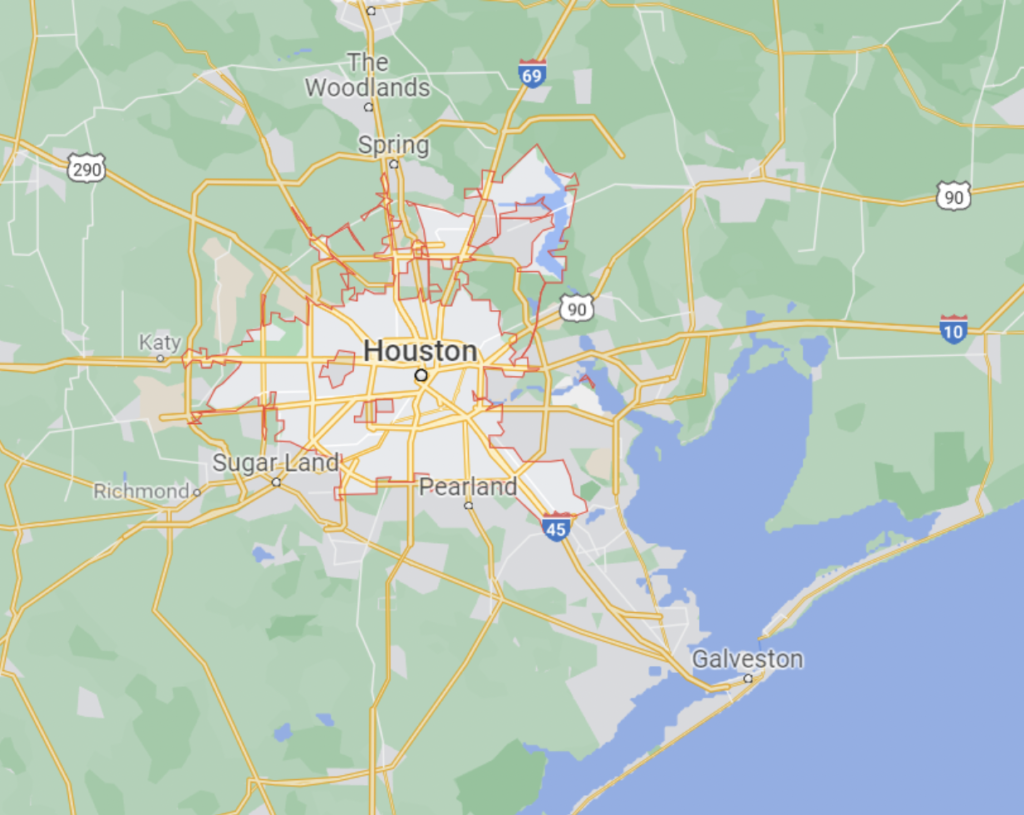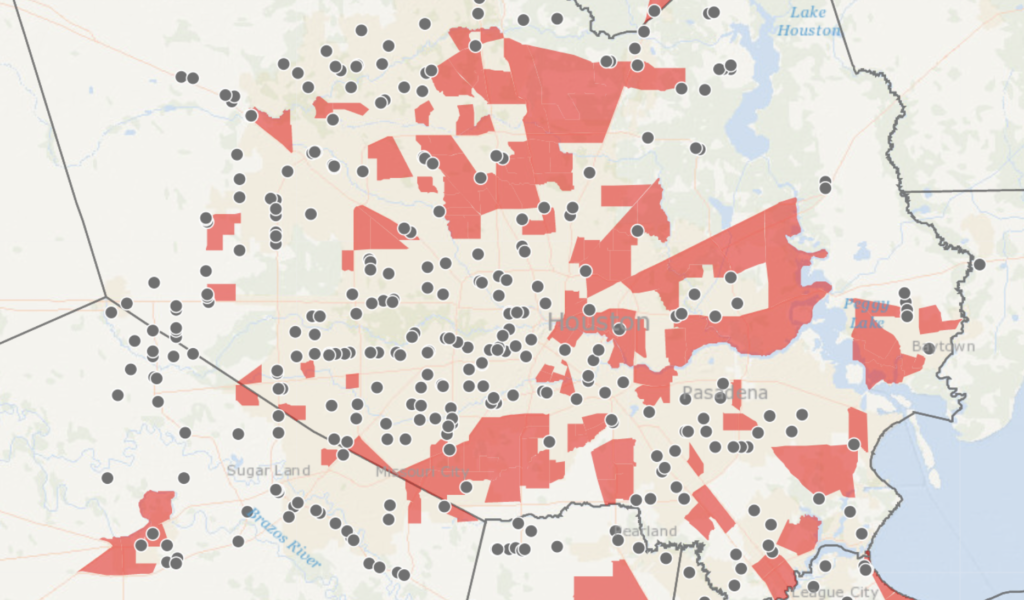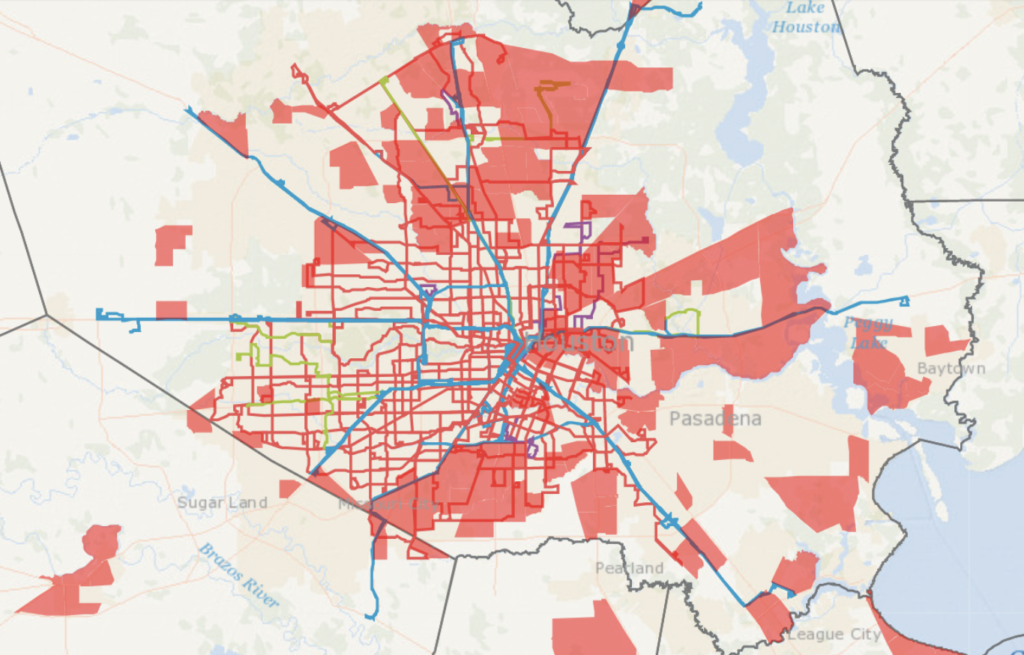What Is A Food Desert?
A food desert is a geographical area where it is difficult to buy healthy, nutritious food at an affordable price. Food deserts include areas where travel to a grocery store is difficult, and in areas where healthy food may be available, but at an unaffordable price.
Houston has many areas that are considered food deserts.
Learn more: What Are Food Deserts?
Fast Facts About Food Deserts in Houston
- 724,750 people in the Houston area experience food insecurity.
- More than 500,000 people live in official food deserts in Houston.
- Around two-thirds of Houston’s adult residents are overweight
- One in three children in Harris County is obese
Why Are There Food Deserts In Houston?
Food deserts are a socio-economic problem that tend to occur in specific neighborhoods as a result of a lack of proper aid and investment in that neighborhood.
Food deserts are found in Houston in neighborhoods with high poverty levels. These areas have lower access to transportation, making it more difficult to get to a grocery store.
Food deserts are also disproportionately found in areas where the residents have lower levels of education and high unemployment rates. Areas with food deserts also have high rates of abandoned or vacant buildings.
Food deserts are more likely to occur in primarily Black communities in Houston. A national 2014 study showed that even in areas of equal poverty, Black communities are less likely than communities of other races to have access to grocery stores and fresh food (Bower et al. 2014).
Where Are There Food Deserts In Houston?
Areas in Houston with low-income and low-access to stores, as well as low vehicle access are food deserts.
This map provides an overview of where food deserts are located in the city of Houston and surrounding areas. Any area showing orange or green is a food desert. All of these areas are low-income areas as well.

The map below provides a more zoomed-in view of food deserts in Houston, shown in red.


The map below shows the same food deserts with the distribution of grocery stores, shown as grey dots. Grocery stores are much more common in areas that are not food deserts, while they are hard to come by within food deserts.

Below is the same map with public bus routes overlaid. Note that the food deserts (in red) often have less access to convenient bus routes. This means that getting to a grocery store from a food desert is difficult.
In fact, in some areas of Houston, over half of the residents must travel more than 6 miles to reach the closest grocery store (Schuler & Koka 2019).

Solutions
The first step in disrupting food deserts in Houston is researching where food deserts exist. Researchers at the University of Texas Health Science Center have created a detailed mapping tool of food deserts and other factors in Houston and surrounding areas.
Researchers at Rice University also created a report in 2019 focused on evaluating the efficacy of various solutions aimed at reducing food insecurity in Houston.
Beyond research, multiple collaborative solutions are needed to address food deserts.
Increasing the Number of Grocery Stores
Some efforts have focused on increasing the number of grocery stores within Houston. This would help make fresh foods more convenient to residents in food deserts that currently have to travel long distances to grocery stores.
For example, the city government’s Houston Grocery Access Task Force works to increase the number of grocery stores in Houston’s food deserts. Their report’s first recommendation is that local governments should target areas for investment, and specifically push grocery stores to open there. They push for the creation of economic development programs to help grocery stores open in underserved areas.
However, simply increasing grocery stores is not enough on its own, as even if healthy food is available at grocery stores, people in low-income areas may not be able to afford to buy it. Grocery stores in food deserts must accept federal food assistance programs like SNAP and WIC.
Solutions that focus on decreasing food prices or providing financial assistance must come hand in hand with increased grocery store numbers.
Increased Access To Vehicles And Other Public Transportation Systems
In addition to creating more healthy food options locally, increasing transportation options can help reduce food deserts.
One method to increase transportation to grocery stores is to build up better public transportation. This may include adding a bus stop or even creating a shuttle system within the neighborhood.
Additionally, Lyft ride sharing created the Grocery Access Program to discount the cost of rides to grocery stores. This program has been piloted successfully in Washington D.C. in 2019, and has expanded to several cities since then. A similar program in Houston would aid residents of food deserts in accessing inconvenient grocery stores.
Increased Community Gardens & Farmers Markets
The program Urban Harvest works to improve access to fresh produce through aiding in the creation of urban community gardens throughout Houston’s food deserts. They currently provide free resources, materials, and education to over 140 gardens in the city.
Urban Harvest also organizes several large farmers markets in the city, which are another option besides grocery stores for buying healthy food.
Other Solutions
Other solutions that could help eliminate food deserts in the city of Houston include:
- Financial incentives and support for neighborhood-based grocery stores and farmers markets with discounted prices
- Increased financial assistance for residents of food deserts to buy food
- Restrictions on where dollar stores can be, as they displace grocery stores
- Increased public health education to encourage healthy eating
Some of these solutions are already being implemented.
Case Study: Third Ward
Third Ward is one of several neighborhoods in Houston. It’s located in southeast Houston, immediately southeast of Downtown Houston.

Third Ward is considered a food desert. This is due to low access to transportation, few grocery stores, and low-incomes.
Despite low access to grocery stores within Third Ward, a 2019 study found that only 14.83% of Third Ward residents leave their neighborhood to get groceries, as it is difficult and inconvenient (Moore et al. 2019). The same study found that health problems like diabetes are prevalent amongst Third Ward residents, likely as a result of a lack of healthy food.
Third Ward follows the classic characteristics of where food deserts are most commonly found. Compared to the rest of the Houston metropolitan area, Third Ward has a lower education level, lower income, and a larger non-white community.
- Only 18% of Third Ward residents have a Bachelor’s Degree, compared to 32.9% of people in Houston.
- The median household income in Third Ward is $22,189 compared to $52,338 in Houston.
- 60% of Third Ward residents are Black compared to 22.6% of Houston residents.
(U.S. Census; Niche).
Many solutions have been suggested to increase Third Ward residents’ access to healthy food.
One of the more creative solutions is the introduction of Nuro vans, self-driving grocery delivery vans. The company’s goal is to make this grocery delivery service free (although the food itself is not free). They launched in Houston in 2019, and partnered with Walmart to provide grocery deliveries.
This would aid food deserts with low transportation in accessing healthy food without taking long, inconvenient trips to the store. Nuro estimates that their vans can reach 350,000 people living in food deserts in Houston.
Other food desert solutions that have been implemented in Third Ward include community gardens, educational programs, and food banks.